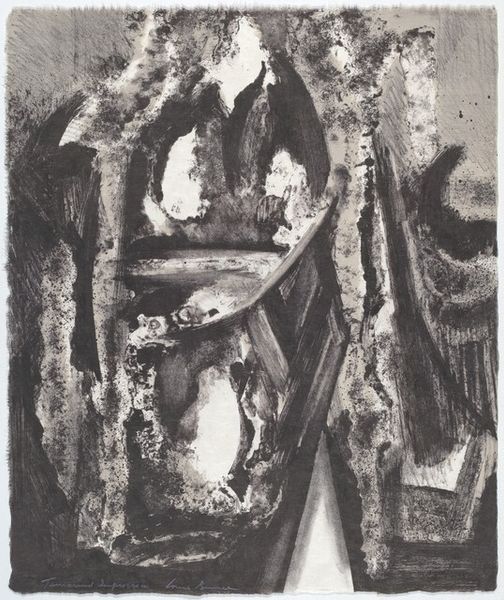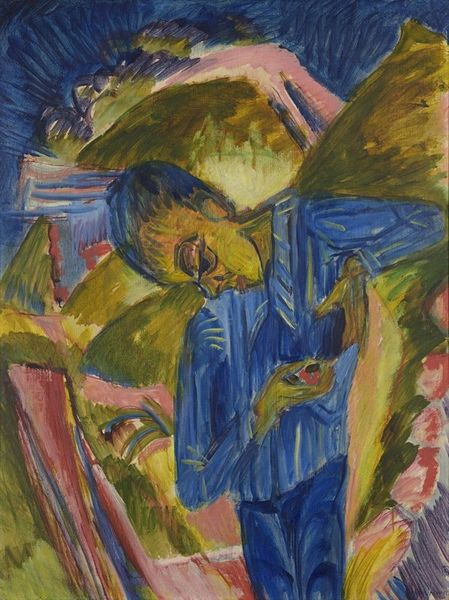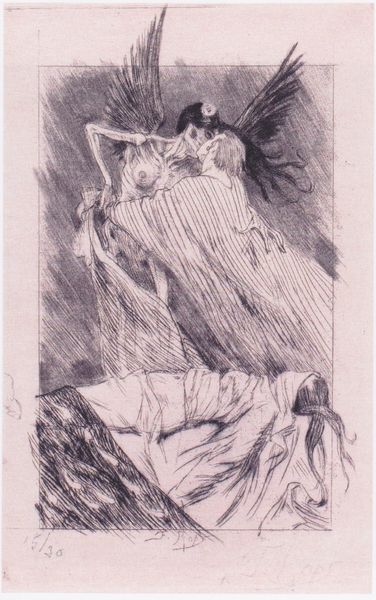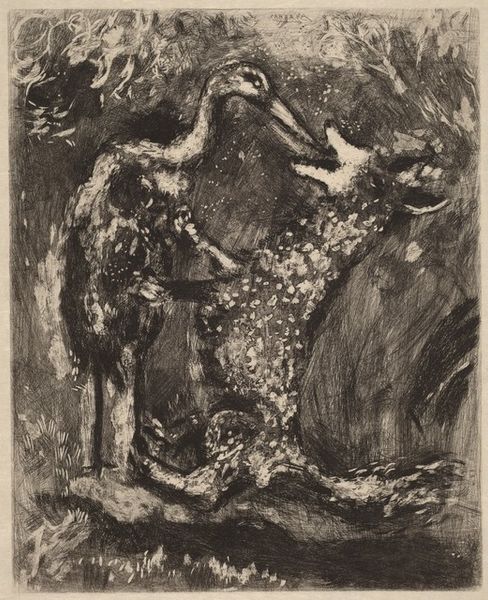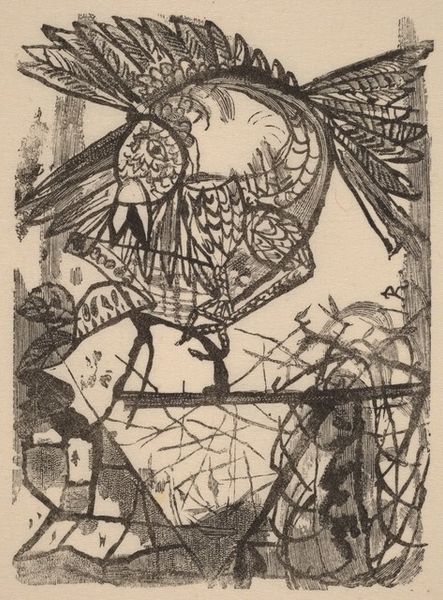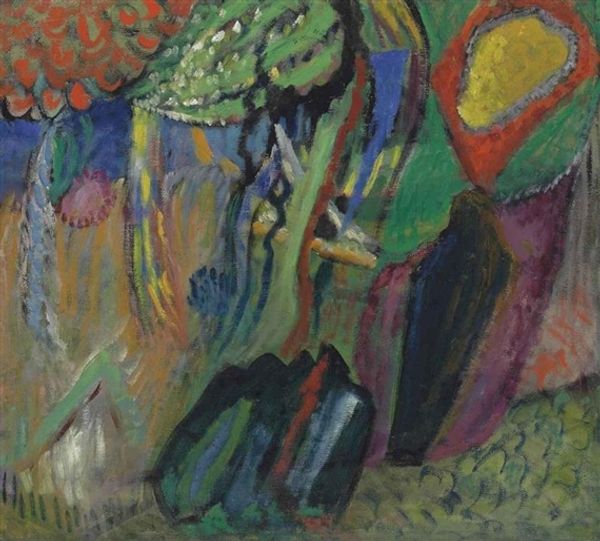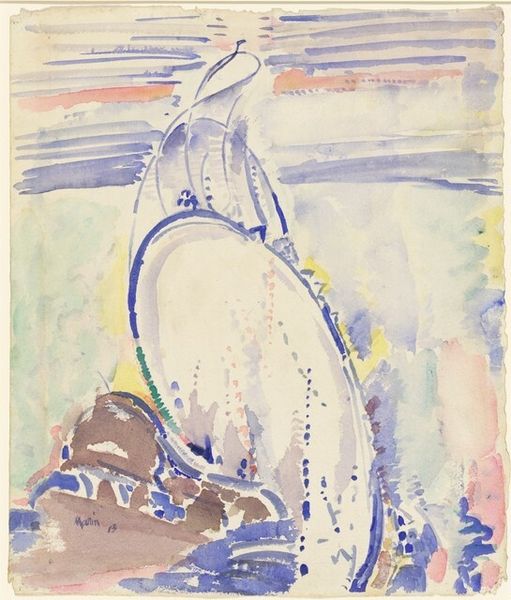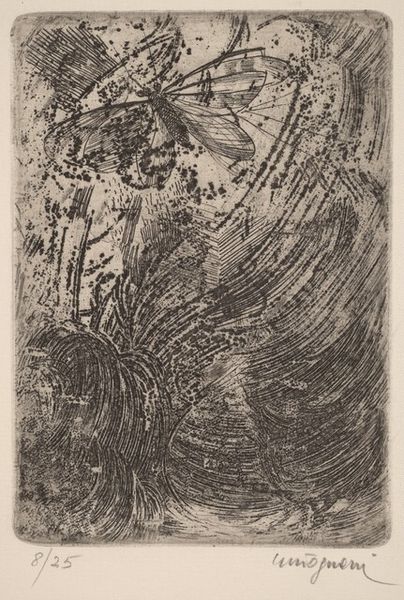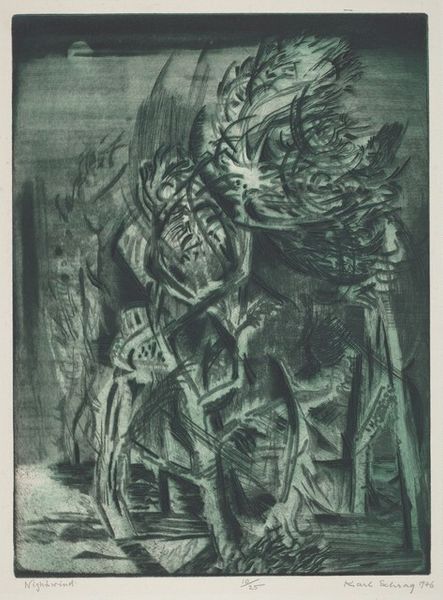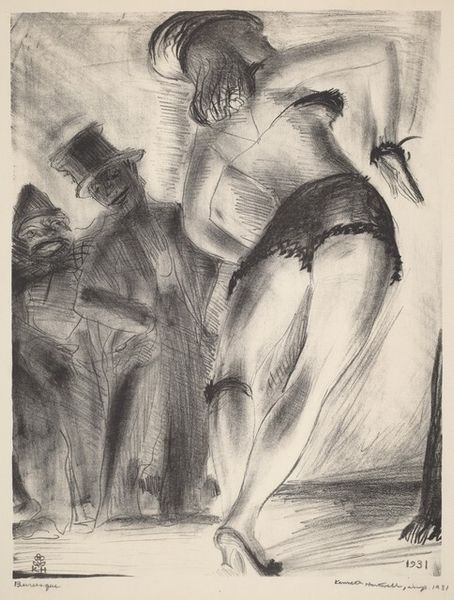
painting, oil-paint
#
painting
#
oil-paint
#
landscape
#
german-expressionism
#
geometric
#
expressionism
#
cityscape
#
modernism
#
expressionist
Dimensions: 94 x 94 cm
Copyright: Public domain
Editor: This is "Rhaetian Railway, Davos" painted by Ernst Ludwig Kirchner in 1917, using oil paint. I’m immediately struck by the painting’s energy. The colors seem to vibrate, and the forms are quite dynamic. What stands out to you from a formal perspective? Curator: Observe how Kirchner uses fractured planes of color, disrupting conventional perspective. The composition is structured by intersecting diagonals, which create a sense of unease. Note how the high-keyed colors are juxtaposed, heightening the emotional impact. What do you make of the geometric composition? Editor: I see that. It's almost as if the landscape itself is exploding with energy. The geometry is interesting because it adds to that tension. Is there anything more specific about how Kirchner utilizes color to convey emotion? Curator: Yes, let us consider the clashing hues, a hallmark of Expressionism. Notice how he eschews blending, opting for abrupt shifts in tonality. This intensifies the feeling of disorientation and captures an emotional response to the modern landscape. How do you see the artist expressing movement with paint and lines? Editor: I see that now. The sharp lines, coupled with the disjointed use of colour, give it such an urgency that a smooth painting would not achieve. I hadn't fully registered it. Curator: Indeed. The visual disjunction echoes the sense of displacement many felt during the period. So the subjective, emotional response takes precedence over faithful representation. The fractured picture plane serves as a pictorial metaphor. Editor: So, Kirchner isn't just showing us a railway, he is trying to get at a certain feeling of seeing the railway, the feeling of experiencing modernity in his own way, and at the time. Thank you for highlighting the more formal relationships at play here. Curator: Precisely. The formal elements work in concert to evoke an affective state. Through an understanding of form, we are closer to grasping the emotional intent of the painting.
Comments
No comments
Be the first to comment and join the conversation on the ultimate creative platform.



